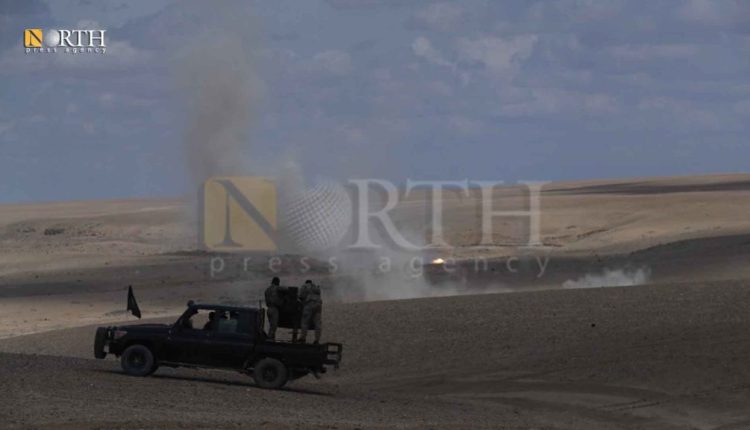
By Avin Youssef
QAMISHLI, Syria (North Press) – Politicians in the city of Qamishli, northeast Syria, agree that Iran’s recent escalation in the region aimed to destabilize it, and emphasize that targeting posts of the Syrian Democratic Forces (SDF) and U.S. bases aims to extend the ongoing U.S.-Iranian conflict. The believe that Iran attempts to reassert influence over the region via mobilizing its proxies and militias.
Ali Rahmoun, Deputy Co-Chair of the Syrian Democratic Council (SDC), believes that Iran’s intervention in Syria is not new, as Iran still has the intention to restore the Persian Empire and expand the Iranian influence in the region, starting from Iraq and reaching Syria and Lebanon. This ambition is often referred to as the Shiite Crescent.
Shiite Crescent is the notionally crescent-shaped region of the Middle East where the majority population is Shia or where there is a strong Shia minority in the population.
On Feb. 5, an Iranian-backed militia launched a suicide drone attack on a training academy for the SDF commando forces in al-Omar Oil Field in the countryside of Deir ez-Zor, eastern Syria. The attack resulted in the killing of six SDF fighters.
On Feb. 8, Mazloum Abdi, Commander in Chief of the Syrian Democratic Forces (SDF) said that Iranian-backed militias’ attacks on the SDF and Global Coalition’s bases in eastern Syria have hindered their fight against the Islamic State (ISIS).
“The U.S. has limited Iran’s intervention in the region, as the former is aware of Iran’s plan. Iran has done everything it can to create chaos in Syria, Lebanon, and Palestine, as evidenced by recent events in Deir ez-Zor,” Rahmoun stated to North Press.
The escalation began in the northeastern region of Syria, specifically in Deir ez-Zor, nearly five months ago, where the Iranian intervention was evident and public via countering the U.S. and its allies.
Iran and the Syrian government enlisted militants to confront the SDF after the latter arrested Ahmad al-Khabil, also known as Abu Khawla, former leader of the SDF’s Deir ez-Zor Military Council. Al-Khabil had been involved in violations and abuses against the residents of Deir ez-Zor.
Lead Inspector General for Operation Inherent Resolve (OIR) said in its fourth quarter report to the U.S. Congress that tribal groups in Deir ez-Zor receive “explicit support from the Syrian regime and its Iranian allies on the western side of the Euphrates River.”
Iran tries to creates chaos and destabilizes the region by mobilizing its proxies, including the National Defense Forces (NDF), as a response to the U.S.-SDF partnership and the stability that areas held by the Autonomous Administration of North and East Syria (AANES) are enjoying, Rahmoun said.
He emphasized that Iran’s efforts will fail because there is a unified stance within the region to counter any threats that may affect stability.
Despite Iran being a genuine ally of the Syrian “regime” and a crucial foundation for its continued rule, it lacks genuine, social and political grassroots in the region.
For his part, Gabriel Moshe Gawriya, Official in Assyrian Democratic Party and member in the Constitutional Committee of the opposition Syrian Negotiations Commission (SNC), told North Press that the Iranian escalation in northeastern Syria, particularly against the SDF, falls within the framework of proxy warfare or the ongoing conflict between the U.S. and Iran.
The Assyrian Democratic Party is an Assyrian political party active in Syria, that traditionally represents the interests of the Eastern Assyrians of the Khabur valley.
Iran pushes its proxies and militias in the region to target U.S. bases under the pretext of supporting Gaza and Palestinian demands, Gawriya added.
He pointed out that Iran seeks to control Iraq, Syria, Lebanon, and Yemen, aiming to strengthen its negotiating position on its nuclear project and gain recognition by major powers for its regional dominance.
Gawriya believes that the withdrawal of the U.S. troops from the region will help Iran to extend influence and enhance dominance over the region via utilizing its proxies and militias recruited from Pakistan, Afghanistan, Iraq, and other countries.
Iran relies on the militias’ Shiism to assert dominance and control the region’s resources.
